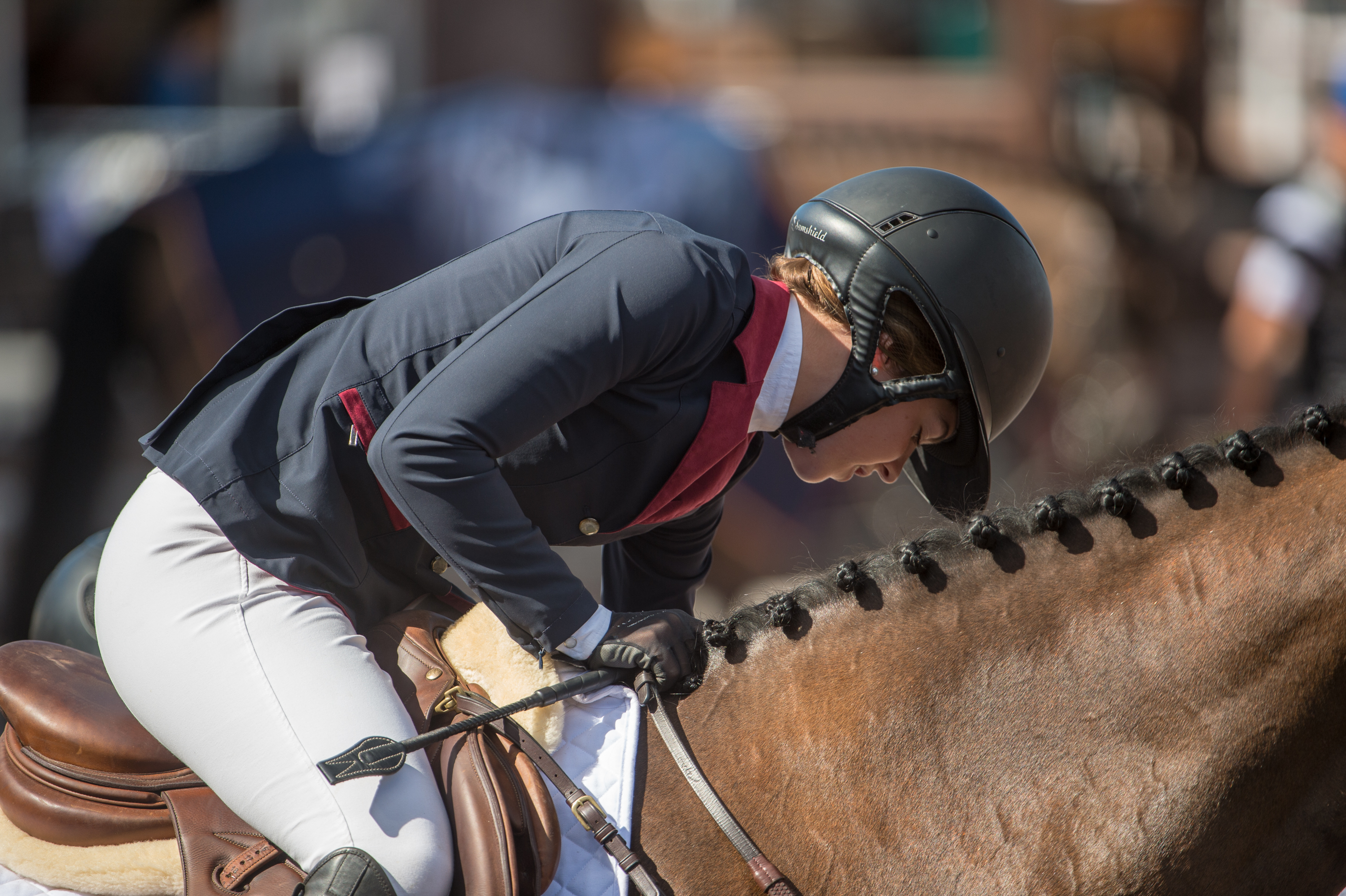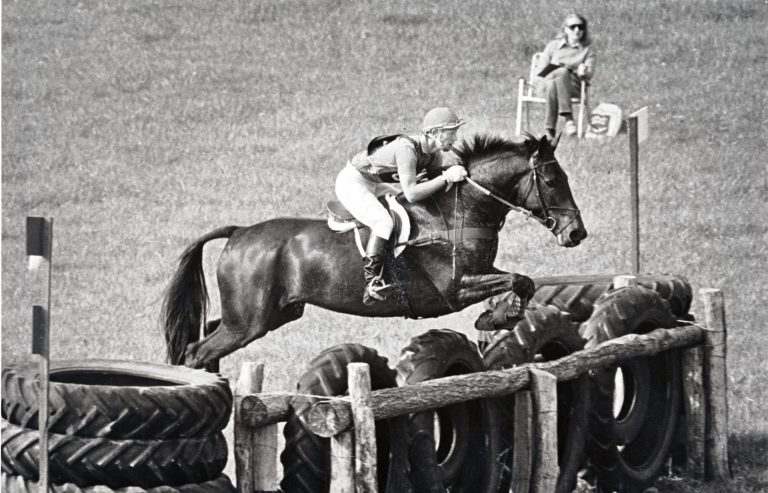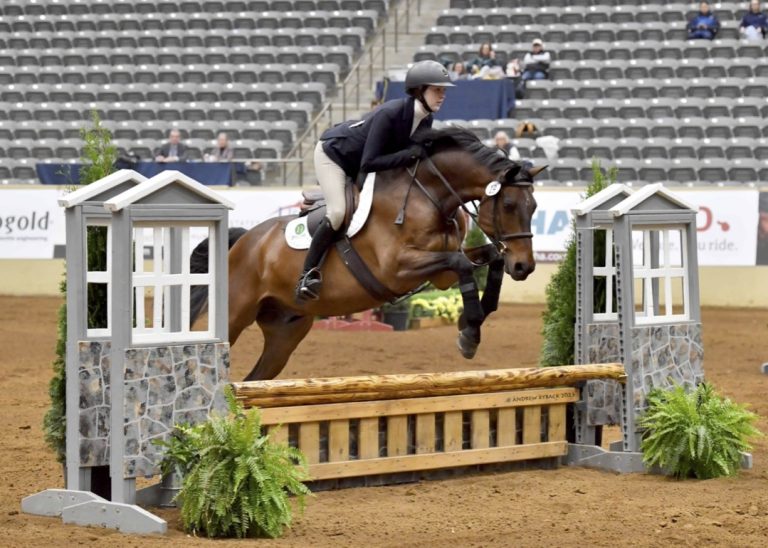
Question: I’m just getting back into showing after a long hiatus. I’ve noticed there are many more options for show coats now besides my old traditional wool coat. What are some of the newer fabrics being used and what do they do?
NOREEN COTHRAN
Answer: You’re going to love these new show jackets. Thanks to the technical fabrics many of them are now made with—polyamide/polyester and spandex/elastine—they are as durable as your old wool coat but lighter, more odor-resistant and far more comfortable. These new materials breathe, stretch and move with you when you’re in the saddle. They’re much cooler on hot days but also windproof and water-repellant so they will stand up to stormy weather, too. And the best new thing? They’re machine-washable!
The stretchiness of these new fabrics provides a closer, more custom fit, so you never need to compromise on size. For example, if you had to order a larger size in the past to accommodate your broad shoulders, the extra stretch will give your shoulders more leeway, allowing you to go back down to a size that fits better all over. Large retail shops also offer different combinations of tall, slim and endowed fits to match every possible body shape and size. You can even add long-underwear layers—which are now available in paper-thin fabrics—underneath these coats on chilly days, and nobody will be the wiser.
Another new design feature solves the old problem of coats gapping in the front between buttons. Many coats now have subtle zipper fronts. These create a smoother, more attractive and flattering fit without gapping.
Although today’s coats are trending toward a shorter length, manufacturers still also offer the traditional longer, three-button hunter style. This more conservative look will always be in fashion, especially in the hunter ring.
For people looking for a little more bling—like dressage riders and show jumpers—many jackets come with a variety of fun, pretty collar and pocket designs. Some coats also sport company logos. The judges I’ve consulted don’t seem to mind these so long as they’re not too ostentatious.
Washing these new coats is easy. Simply machine wash on gentle cycle, hang to dry and you’ll be good to go by morning. If your horse slobbers on your sleeve, just wipe it down with a damp cloth. No more dry-cleaning bills! You’ll also notice that these new materials don’t hold odor the way old wool coats did, so no more funky smell to remind you how much you were sweating at your last show.
The only drawback to the new jackets is their limited color palette compared to the wide variety of colors and patterns available 25 years ago. These microfiber materials were initially offered only in a few solid colors. They’ve now expanded to include navy, hunter green, black, brown, gray and electric or royal blue. They’re also just beginning to offer some subtle stripes and checks. Remember to check your rule book for guidelines on what colors and styles are acceptable for your discipline.
Many beautiful, good-quality coats fall into the $250 to $400 price range. The fabrics in more expensive coats are generally higher quality and longer lasting.
In the early 1980s, Noreen Cothran’s mother, Pat Lehner, started a small tack shop called The Flying Dutchman in the tack room of her farm in Tryon, North Carolina. In the beginning, she ran the shop on the honor system, allowing customers to pick up what they needed and leave the payment for their purchases. Noreen took over the business several years later, moved it to an old feed-and-seed building in Landrum, South Carolina, and renamed it The Farm House. The store rapidly expanded into a nationally recognized source of products for English riding disciplines. In addition to its large inventory—for example, it stocks more than 1,000 show coats at a time—it also runs an active website (farmhousetack.com) and two mobile units, which cover major shows across the Southeast and Northeast.
This article was originally published in the March 2018 issue of Practical Horseman.










